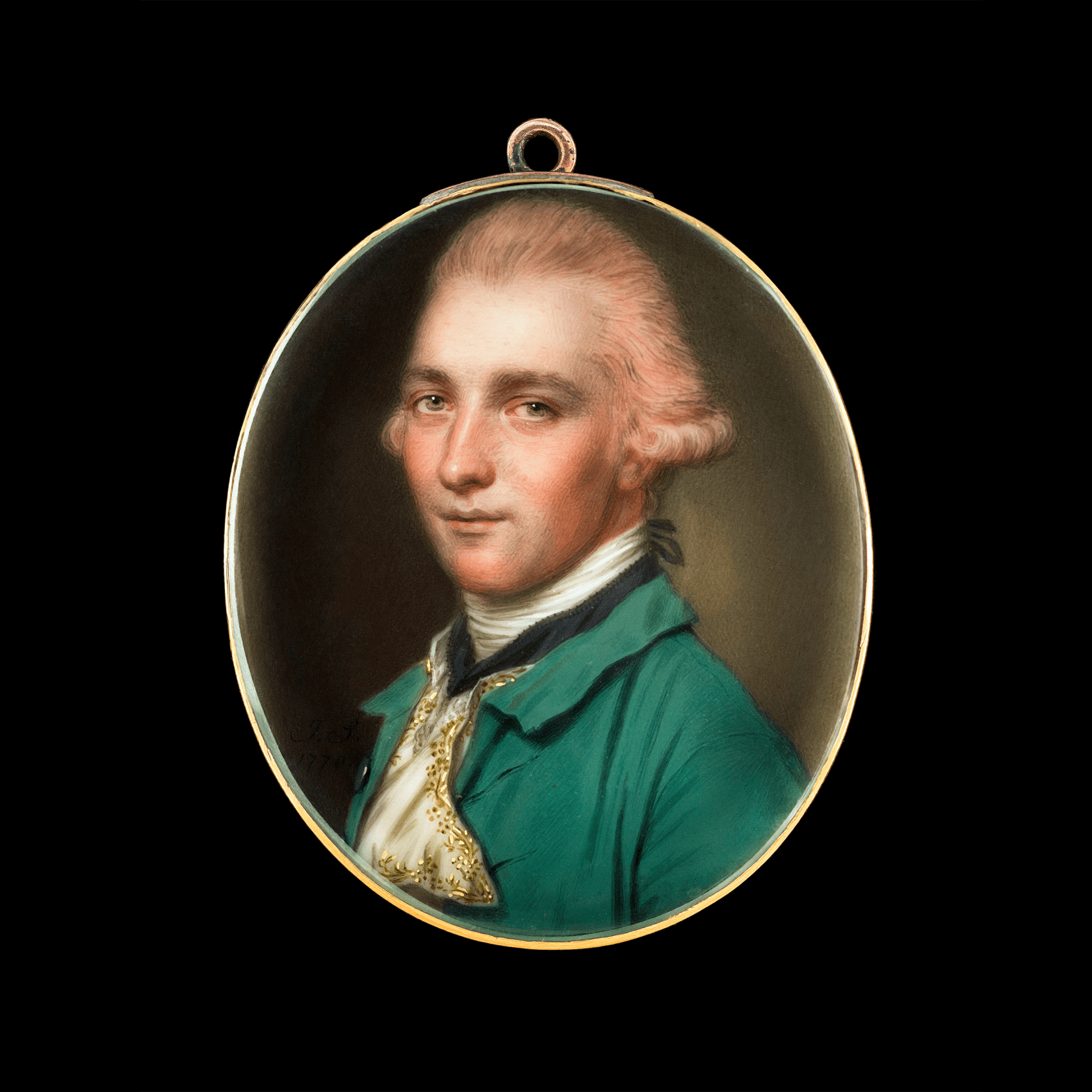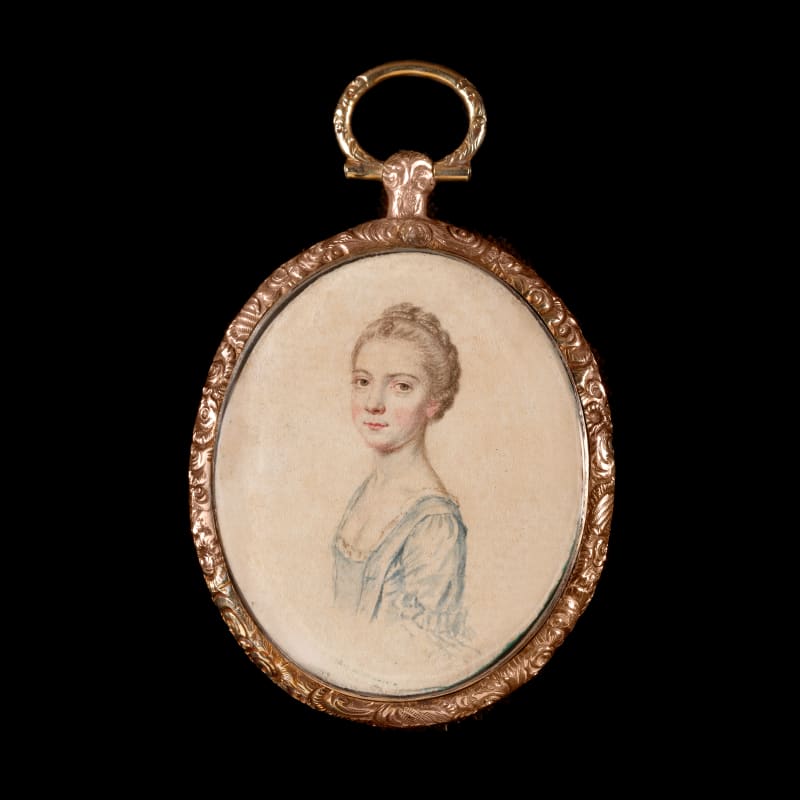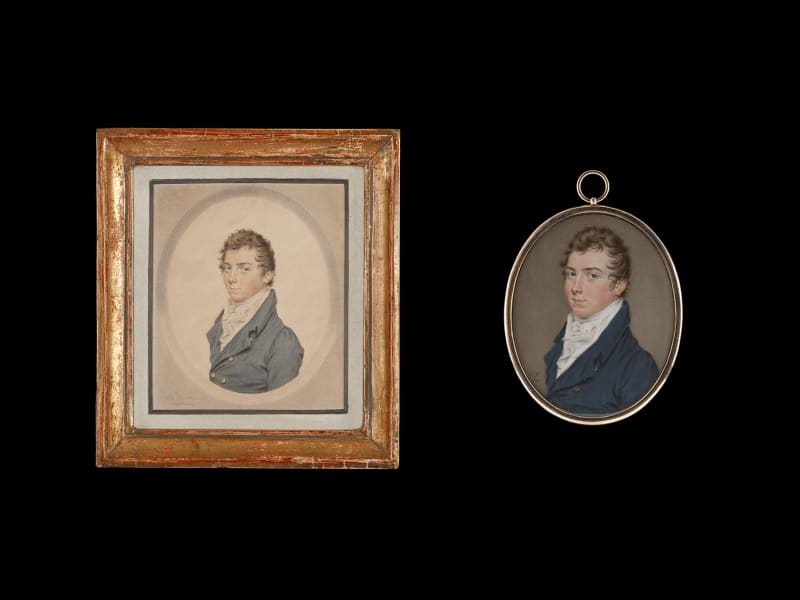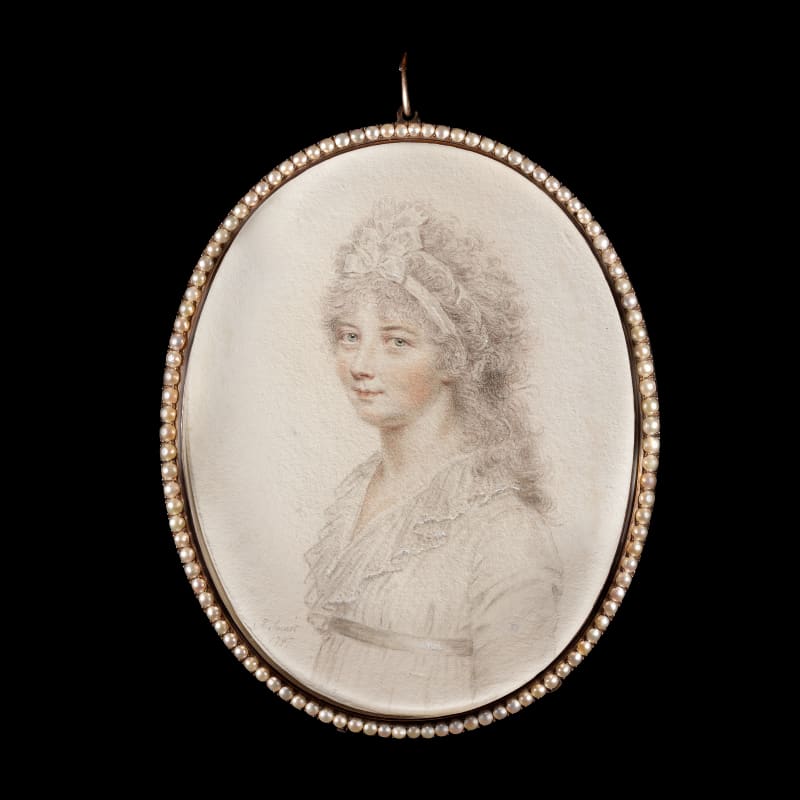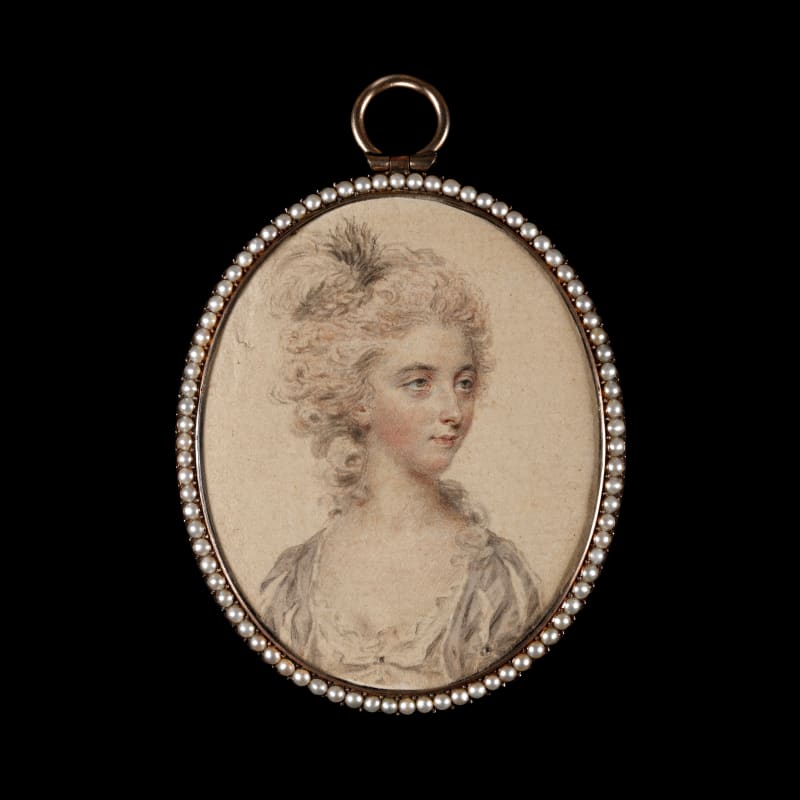This portrait of a gentleman wearing a vivid green coat was traditionally thought to represent James Dunlop, 5th. of Garnkirk and of Tol(l)cross. If indeed this portrait does show the young James Dunlop, it was painted four years prior to his marriage to his cousin, Marion Buchanan of Mount Vernon (1754-1828), the daughter of George Buchanan of Mount Vernon (1728-1762) and Lilias Dunlop of Garnkirk. James was the son of Colin Dunlop 'Provost of Glasgow' and Martha Bogle, Garnkirk being approximately six miles north-east from Glasgow. He purchased Garnkirk from his uncle, James Dunlop, 4th. of Garnkirk.
As befits a young gentleman of Dunlop’s status, he wears a fashionably jewel-bright coat, white waistcoat with gold embroidery and a ‘solitaire’, or thick black ribbon around his neck. This accessory was described in Anstey’s long, humorous poem in ‘The New Bath Guide’ as “What can a man of new fashion denote; like ‘ell of a good ribbon tied under the throat!”...
This portrait of a gentleman wearing a vivid green coat was traditionally thought to represent James Dunlop, 5th. of Garnkirk and of Tol(l)cross. If indeed this portrait does show the young James Dunlop, it was painted four years prior to his marriage to his cousin, Marion Buchanan of Mount Vernon (1754-1828), the daughter of George Buchanan of Mount Vernon (1728-1762) and Lilias Dunlop of Garnkirk. James was the son of Colin Dunlop 'Provost of Glasgow' and Martha Bogle, Garnkirk being approximately six miles north-east from Glasgow. He purchased Garnkirk from his uncle, James Dunlop, 4th. of Garnkirk.
As befits a young gentleman of Dunlop’s status, he wears a fashionably jewel-bright coat, white waistcoat with gold embroidery and a ‘solitaire’, or thick black ribbon around his neck. This accessory was described in Anstey’s long, humorous poem in ‘The New Bath Guide’ as “What can a man of new fashion denote; like ‘ell of a good ribbon tied under the throat!” (1766).
Painted relatively early in his career, this portrait nevertheless shows Smart working in the distinctive technique he employed for the rest of his working life. The attention to detail in this portrait, including the observation of the various textures, is extraordinary; from the picot edging on the black ribbon around the sitter’s neck to the gold thread standing proud on his waistcoat. The portrait may well have been sent to James’s future wife Marion on the occasion of their betrothal to be worn attached to a velvet ribbon her wrist.
